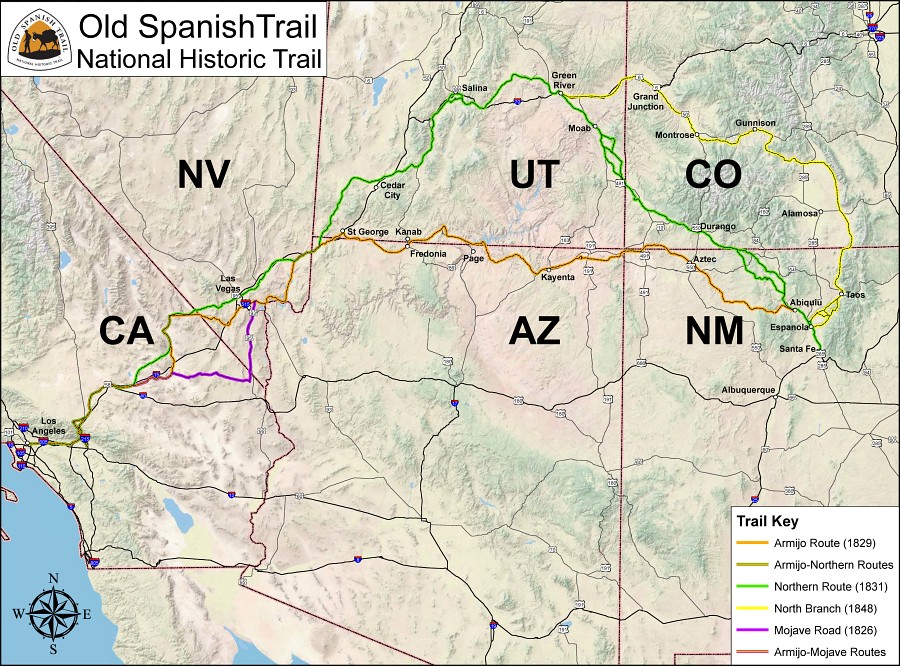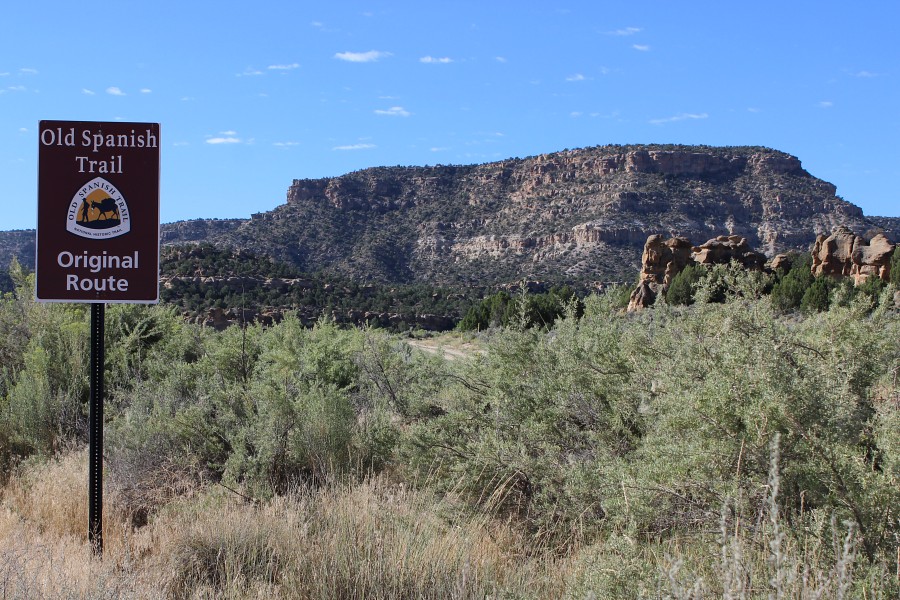Old Spanish National Historic Trail

Antonio Armijo left for California in 1829 with 40-60 men and 100 pack mules loaded with woolen rugs and blankets and tanned hides. In return, Armijo brought back more horses and mules to the east which would become the working stock for other trade parties, miners, American and Mexican military, and farmers from northern Mexico (BLM and NPS 2013).
Other trade parties soon followed with some developing alternative routes depending upon weather and water availability. Collectively these routes became known as the Old Spanish Trail. Along the Old Spanish Trail sound animals, good packing equipment, and a capable crew were the prerequisites of a successful pack train. The success of the trip depended on the skills and abilities of those who packed and drove the animals that carried the merchandise. Mules had incredible strength and endurance, fared better than horses where water was scarce and forage poor, and recovered more rapidly after periods of hardship. Their hard and small hoofs withstood the shock and abrasion of rocky, boulder-strewn terrain. The aparejo (packsaddle) was the central piece of gear and carried heavy, odd-sized items safely over long distances without injuring the animal (BLM and NPS 2013).
In addition to the Old Spanish Trail were two other trails which merged in Santa Fe. El Camino Real de Tierra Adentro (the Royal Road to the Interior Lands) was a wagon road between Mexico City and Santa Fe and the Santa Fe Trail, was a wagon route that crossed the plains and linked Santa fe with Missouri.
However, by 1869, a rail route connected the plains of the Midwest and San Francisco Bay. Portions of the Old Spanish Trail evolved into wagon roads for local travel, but the days of cross-country mule caravans on the Old Spanish Trail had ended (BLM and NPS 2013).
The Bureau of Land Management and the National Park Service administer the trail together to encourage preservation and public use. These two federal agencies work in close partnership with the Old Spanish Trail Association, American Indian tribes, state, county, and municipal governmental agencies, private landowners, nonprofit groups, and many others.


.jpg)
Brief Chronology
| 1598 | Don Juan de Oñate establishes San Juan de los Caballeros (near modern Ohkay Owingeh Pueblo), the first Spanish settlement in New Mexico. |
| 1610 | Don Pedro de Peralta founds Santa Fe, the new capital of New Mexico. |
| 1781 | Spanish colonials establish El Pueblo de la Reina de los Angeles in California. |
| 1821 | Mexico gains independence from Spain. |
| 1829 | Antonio Armijo leads the first trade caravan from Abiquiu to Los Angeles, opening the Old Spanish Trail. |
| 1831 | William Wolfskill and George C. Yount blaze a more "northern route" that ascends into central Utah before heading southwest into California. |
| 1846 | The Mexican-American War begins. |
| 1848 | Treaty of Guadalupe-Hidalgo ends Mexican-American War; the Southwest becomes U.S. territory; California Gold Rush begins. |
| 1849 | Commercial caravans across the Old Spanish Trail largely cease as more direct transportation routes develop. |
| 2002 | The Old Spanish National Historic Trail is designated by Congress. |
References:
BLM and NPS 2013
Old Spanish National Historic Trail Official Map and Guide. Department of the Interior 2013.

Exploring Today
Arizona
California
Colorado
Nevada
New Mexico
Utah
More Information
| ➠ Return to Archaeology Page |
